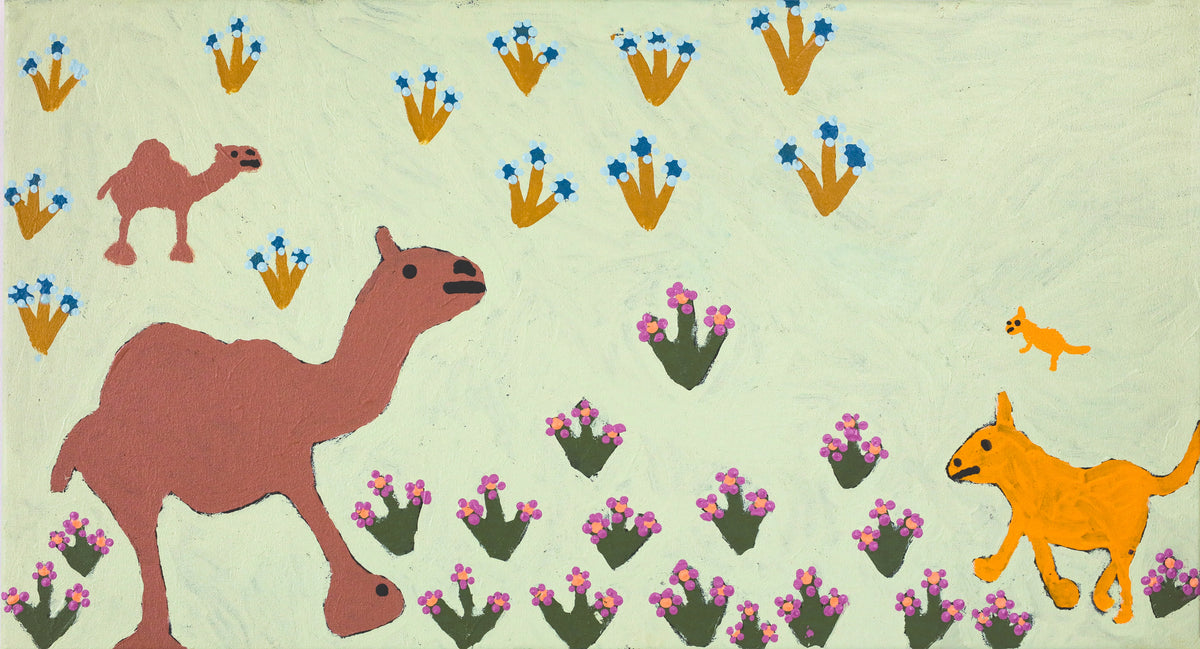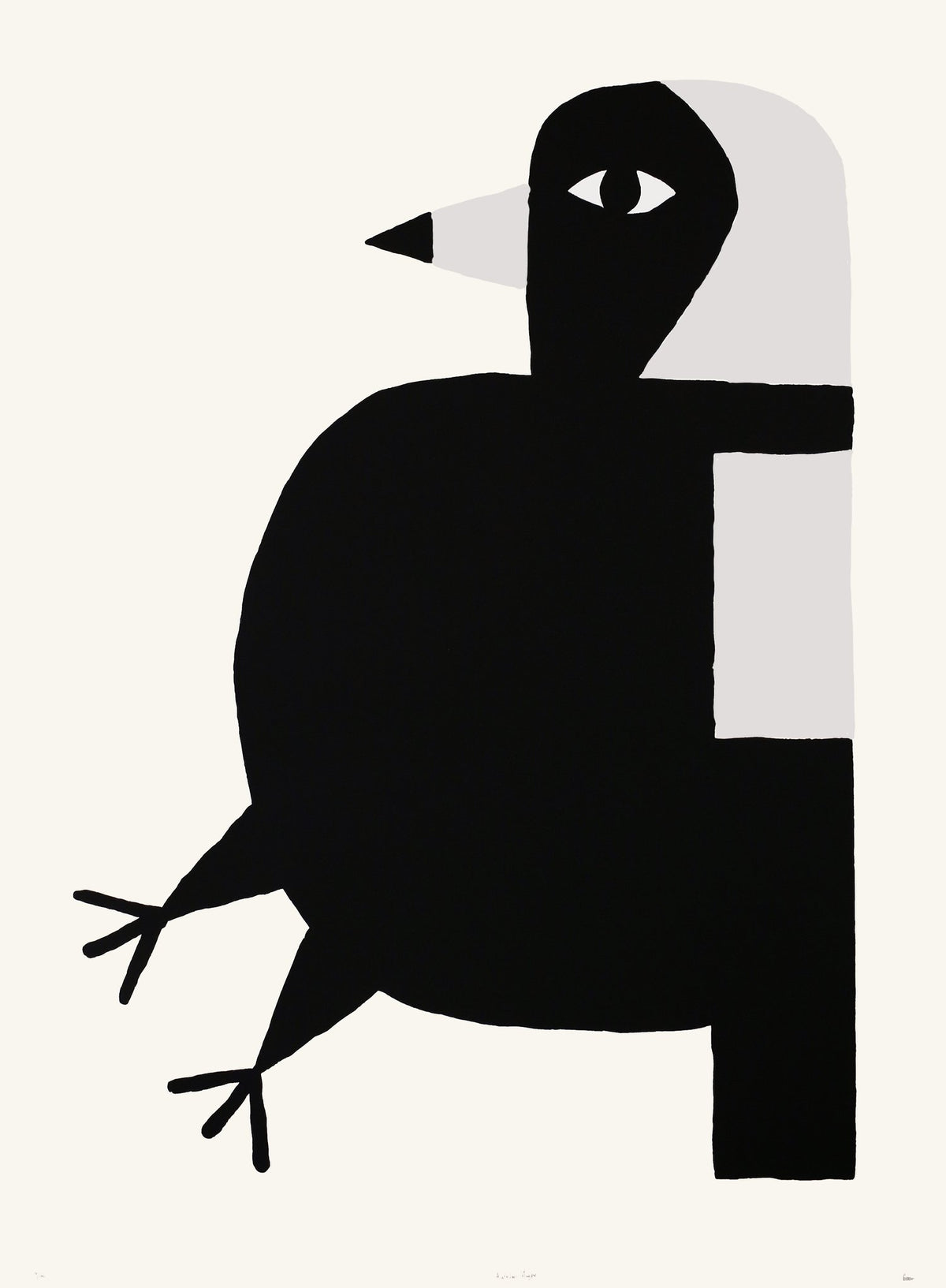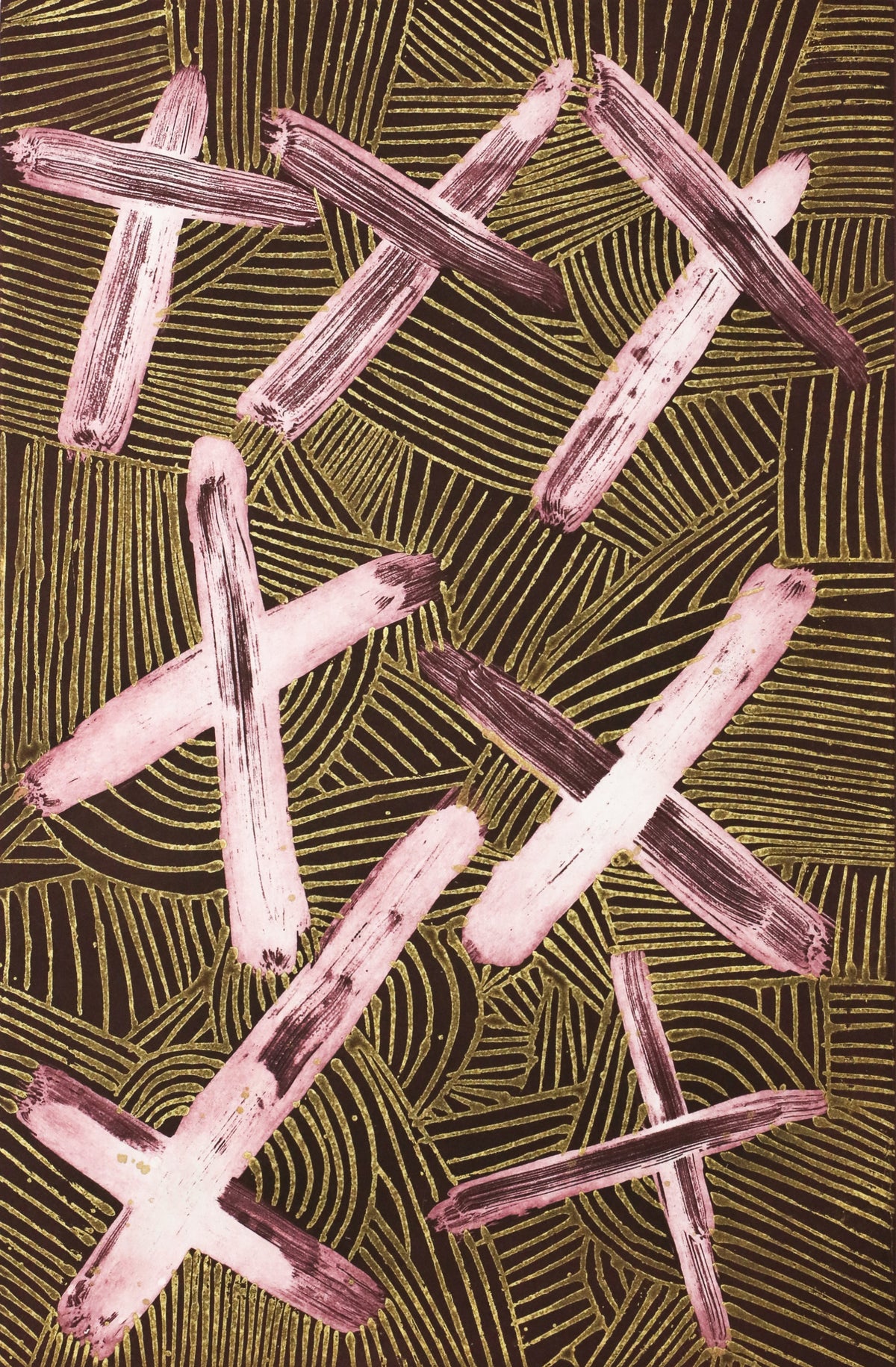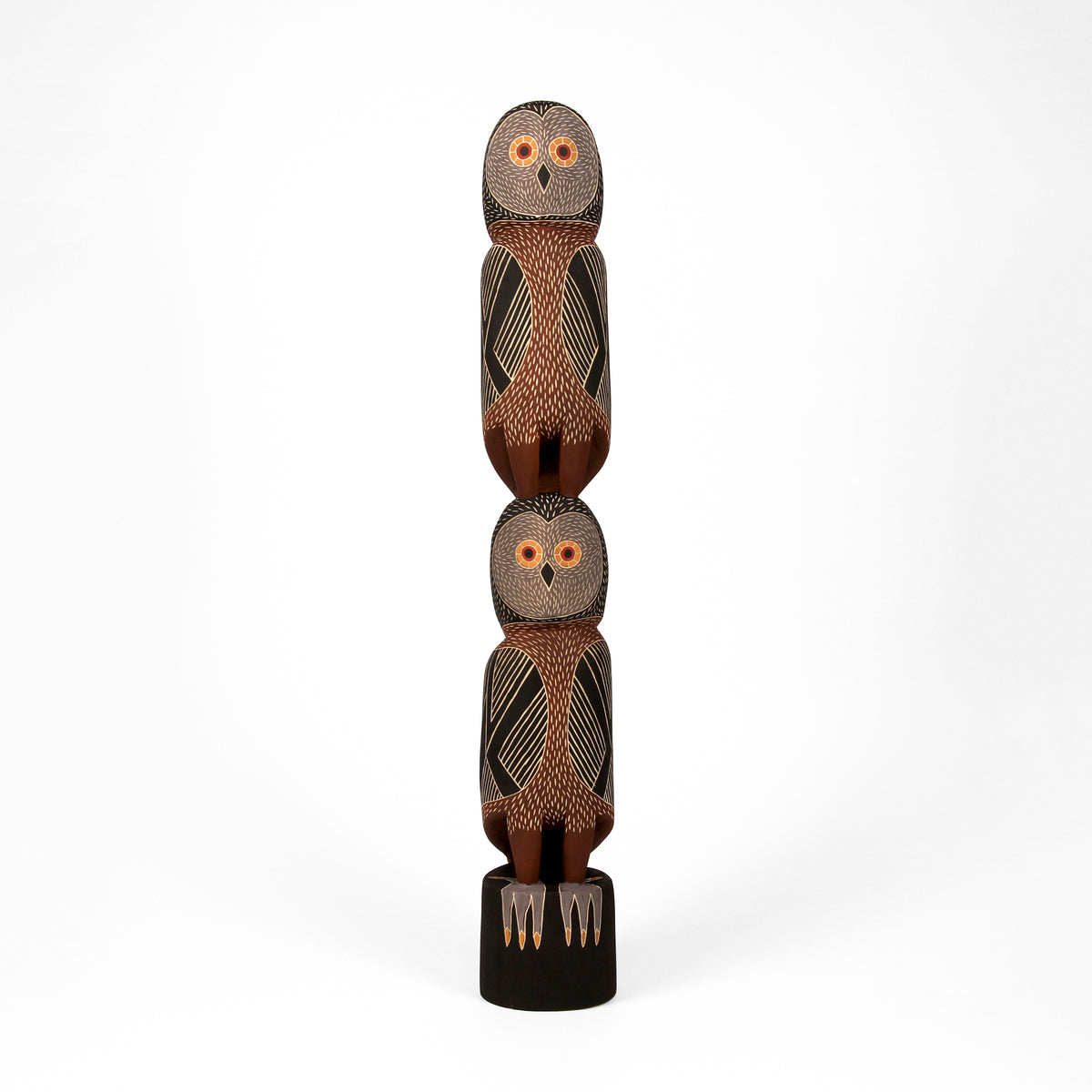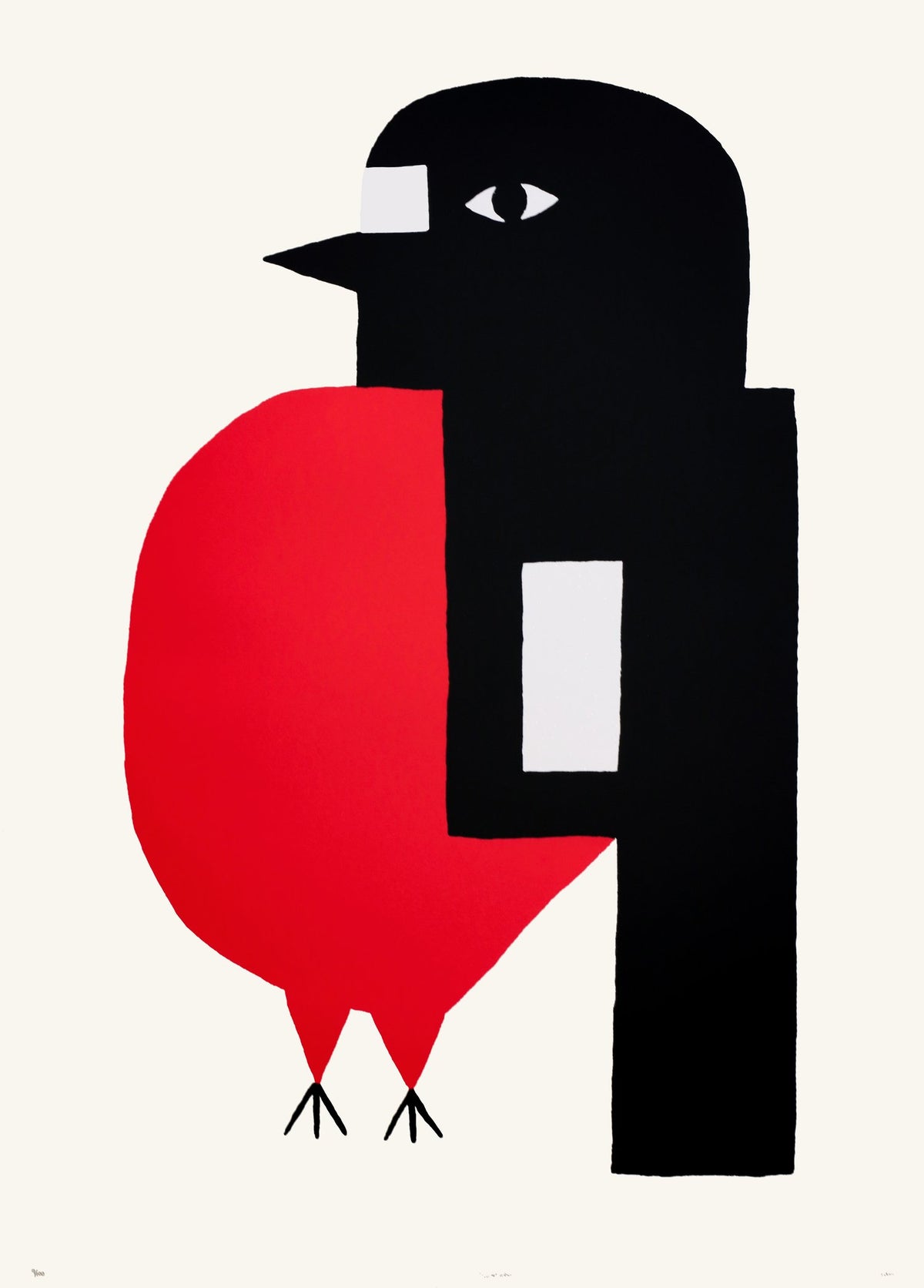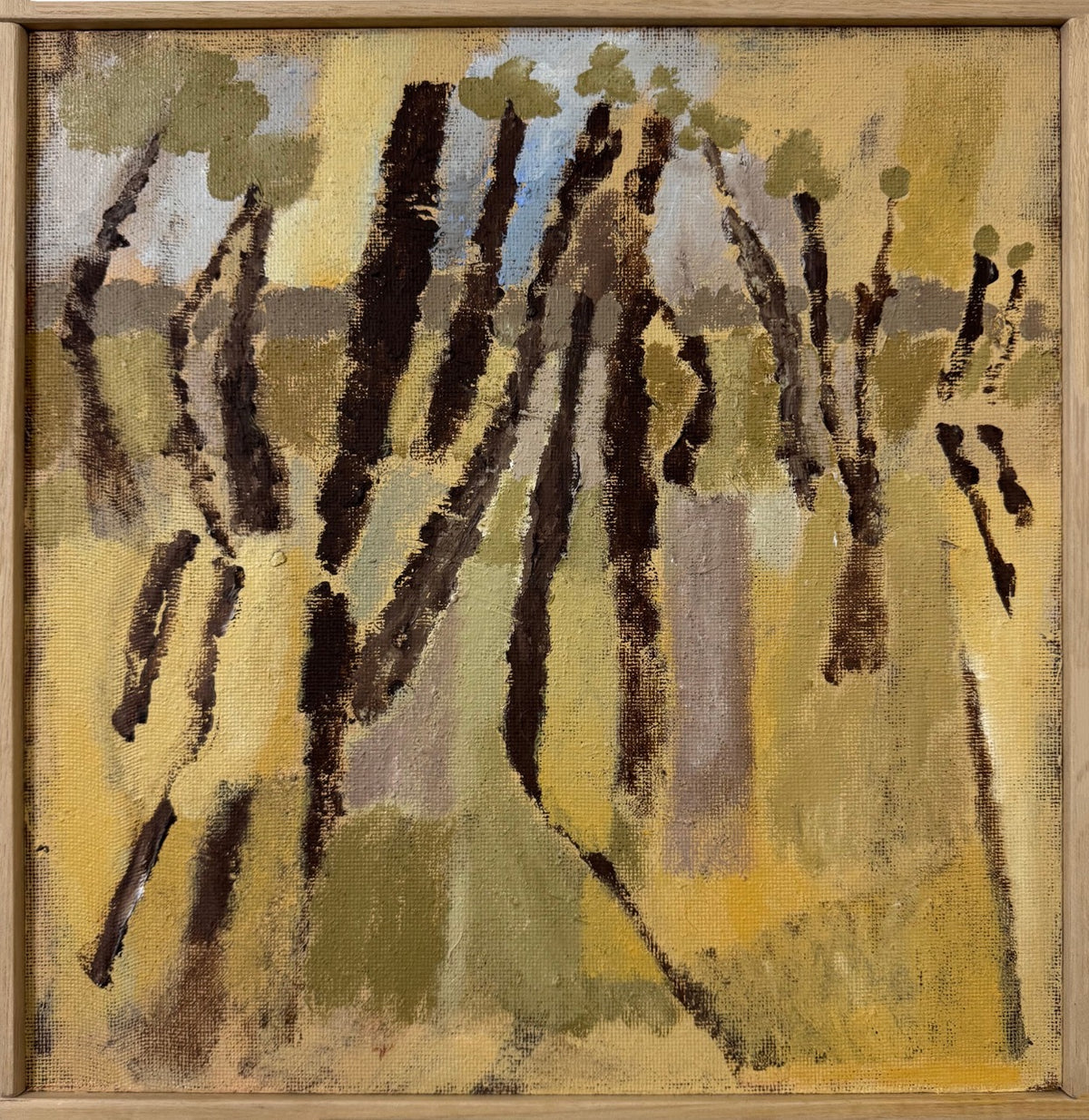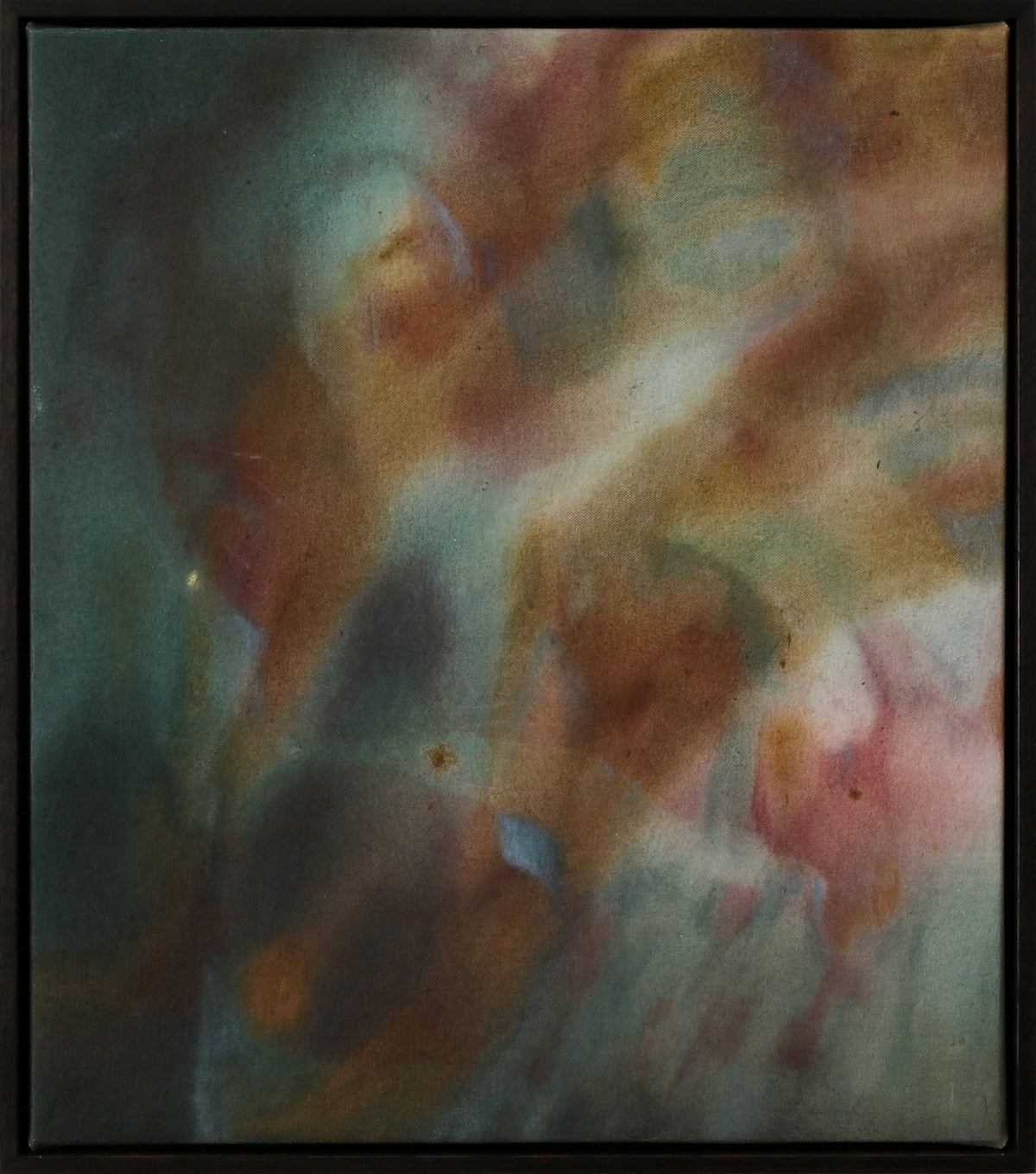Gunyan 607-22
Yambirrku is the green parroƞish, totemic to the Maŋgalili clan. It was speared by the Maŋgalili ancestral hunter Muwandi at Djarrakpi from a special rock that bears the same name. The fish was taken back to Muwandi’s camp called Dhunwaŋguthi. The left over carcass was placed in a sand pit to keep the camp clean. The pit was to evolve into the Yiŋapuŋapu, the traditional mortuary sand sculpture where the body of a deceased Maŋgalili was placed to keep the contamination of death at bay. Paintings of the Yiŋapuŋapu are often depicted with the skeletal remains of Yambirrku in its middle. The ceremony concludes with a ritual meal of Yambirrku. Toilers in keeping the beach at Djarrakpi ritually pure are Gunyan totemic sand-crabs. It is their job to cleanse the bones of dangerous spirits held within the body tissue. A metaphor for this action of spiritual cleansing in mortuary ceremony is utilised in this painting by way of depicting Mirriya or Gunyan the sand or ghost crab picking the bones of a fish carcass (Yambirrku) on the beach. Contemporary Maŋgalili on the beaches of Djarrakpi put their food scraps in one place when at camp - the secular Yiŋupuŋapu.
This artwork has been signed by Caroline Dhamarrandji on behalf of Datjumula Guyula.
SHIPPING
Brunswick Street Gallery would be pleased to arrange a quote for shipping if you are unable to collect directly from us.
Please be advised that oversized and/or fragile artwork or artworks being sent to remote areas may incur additional shipping costs.
FLEXIBLE PAYMENT
Afterpay, Laybuy
EXHIBITIONS
Artworks purchased from current exhibitions will be available for collection or shipping after the exhibition has ended.
–






